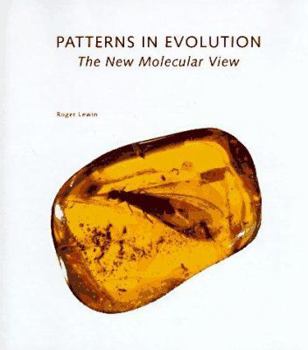Patterns in Evolution: The New Molecular View
(Book #62 in the Scientific American Library Series Series)
Select Format
Select Condition 
Book Overview
This work shows how the tools of molecular biology are transforming the way in which evolution is viewed. Genetic analysis, especially from the DNA of prehistoric creatures, has enabled scientists to... This description may be from another edition of this product.
Format:Hardcover
Language:English
ISBN:0716750694
ISBN13:9780716750697
Release Date:January 1996
Publisher:W H Freeman & Co
Length:246 Pages
Weight:2.00 lbs.
Dimensions:10.0" x 0.8" x 9.0"
Customer Reviews
3 ratings
Molecular evolution -- about time!
Published by Thriftbooks.com User , 25 years ago
Clearly written introduction to modern topics in biological evolution. Phenetics and cladistics are explained and contrasted. The advantages of classification based on molecular methods versus morphological methods are similarly considered. The neutral mutation random drift hypothesis and molecular evolutionary clocks are explained fairly comprehensively, yet at a level suitable for the general reader. The reader is introduced to the basis of molecular techniques, eg, RFLP, PCR, etc. Molecular anthropology, ie, the application of molecular methods to resolve issues of when and where modern humans arose is considered in detail. As well, the new field of obtaining DNA samples from long-dead animal remains is presented.
Molecular research from origins to restorations
Published by Thriftbooks.com User , 25 years ago
As the dust raised by the Sociobiology debate is settling, you may wish to catch up on why this issue became so contentious. And why Sociobiology will arise as one of the most original ideas in modern biology. This book is a fine introduction to how the mechanisms of the genes work Lewin's outstanding reputation can only be enhanced by this description of gene analysis and function. He explains many facets of gene research with superb illustrations and sidebar text describing the various analytical techniques molecular biologists use to explain life's diversity and history. Why are there so many forms of life? Textbooks abound with evolutionary 'trees' purporting to explain how life evolved from simple cells, lacking even a primitive nucleus through the complex creatures around us today. Most of these diagrams are fallacious, burdening our understanding with the idea that evolution is 'progressive'. Lewin's account, laced with more realistic graphics, show that all forms of life that once existed, still do in parallel with our own companions on this planet. This book does a superior job relating how molecular biology has enabled researchers to update the picture of humanity's place in the structure of nature. Lewin builds his picture of the human role slowly and carefully, but at the conclusion, you will find he's performed the task to near perfection. His description of the Mitochondrial Eve hypothesis, for example, leaves you better informed on this idea than any other popular account.His writing in this account achieves a level rather more elevated than his other books. BONES OF CONTENTION, or his books co-authored with Richard Leakey are definitely easier reading. The level of information here, however, is also far greater than offered in his other books. This book clearly displays his move from New Scientist to Science in its prose. That's not a criticism, but some readers may find this book more daunting than his others. Nevertheless, the information offered here is worthy of any reader's scrutiny. If you want to know what your DNA is up to and how science has figured out how to describe it, this is the book to have.
great book for all
Published by Thriftbooks.com User , 25 years ago
I am a student at the University of California, Santa Barbara majoring in molecular biology and interested in evolution from a molecular point of view. Roger Lewin's book is an excellent introduction to how the techniques of molecular biology are being applied to ecology to expand our understanding of evolution. The book addresses several interesting topics and gives a history how some very important procedures for analyzing proteins and DNA (such as amino acid and DNA sequencing, hybridization, RFLPs, restriction enzyme mapping, etc.) are helping to answer many important questions. The book begins with an introduction into why a molecular approach to solving ecological problems was necessary, centering on some of the dead end arguments of strictly using morphology to construct "evolutionary trees". Lewin details how molecular techniques can be powerful and provide great insights into the debate over homology and analogy in ways that were not possible more than perhaps twenty years ago, but he also discusses the limitations of these techniques. The molecular "evolutionary clock" has a whole chapter devoted to the history of its development, and to the ways it's is being used today to shed light on old mysteries where it seemed as though morphology had offered all that it could. Sometimes the results of the molecular tests Lewin describes contrast sharply with what biologists have believed in the past about when species diverged (including man from what are now the great apes) to the taxonomic organization of whole groups of organisms. Over all I think this book is fascinating, informative and a great book for those who want to learn more about the information molecular analysis is providing to aid in our understanding of life on earth. I highly recommend it. I believe this book is appropriate for high school and college as perhaps a very interesting supplement to a textbook.






